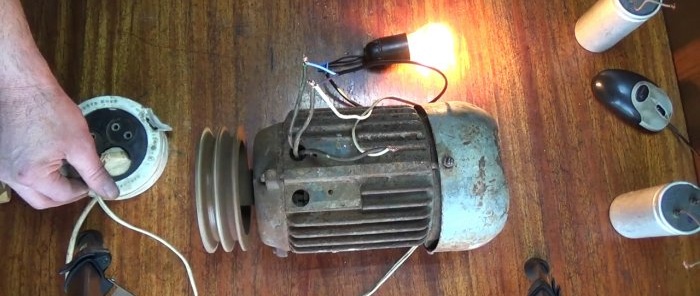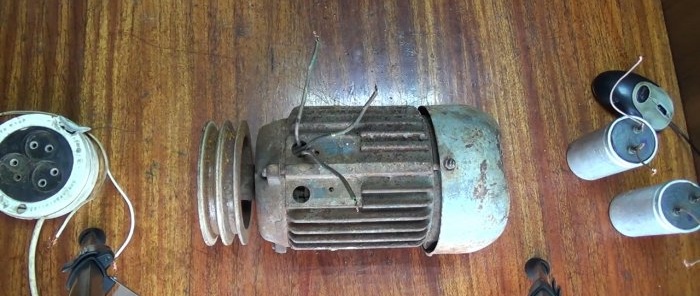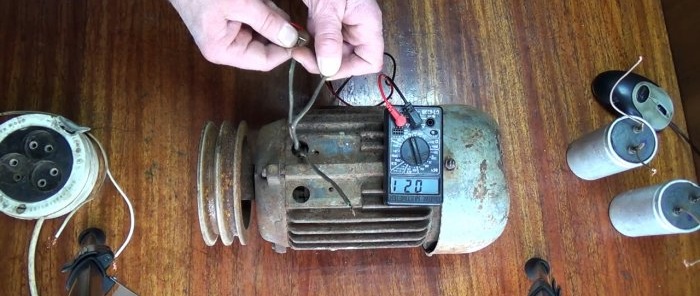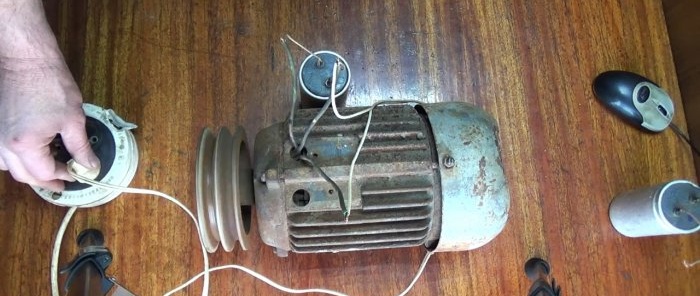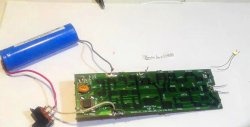New “Lamp” method of connecting a three-phase electric motor to a single-phase 220 V network
When connecting a three-phase electric motor to a 220V network, it is necessary to ensure a phase shift so that it begins to rotate. This can be done by connecting a starting capacitor or a regular incandescent light bulb.
What you will need:
- two-wire wire with plug;
- incandescent light bulb with socket;
- start button 220V.
Connecting a three-phase motor with a capacitor
A three-phase electric motor has 3 windings, so 6 wires come out of it, 2 for each. Of these, 3 have one insulation color, the remaining 3 have another. You need to wind together any bundle with one color of insulation and insulate the twist. Next, a two-core wire with a plug is connected to any two of the remaining 3 wires.
You need to connect the capacitor contact to the remaining wire. Its second contact is attached to either of the two twists. After this, the engine will start. Depending on whether the second end of the capacitor is connected to phase or zero, the rotor will rotate clockwise or counterclockwise.When using a capacitor, it is imperative that a start button is installed in front of it, since it should only operate at the moment of startup.
Connecting a three-phase motor with a light bulb instead of a capacitor
Weak motors can be started using a similar scheme, but using a regular incandescent light bulb instead of a capacitor. It will create a phase shift, due to which the motor armature will also be able to unwind. This method is cheaper than the first, since a light bulb costs pennies compared to a capacitor.
Watch the video
Similar master classes
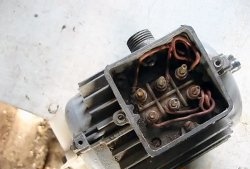
Connecting a three-phase motor according to a star and delta circuit
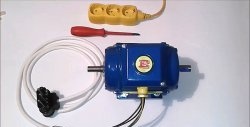
Connecting a three-phase electric motor to a single-phase network
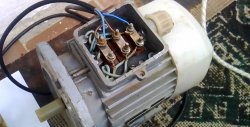
Starting a three-phase motor from a single-phase network without a capacitor

Selection of a working capacitor for a three-phase electric motor
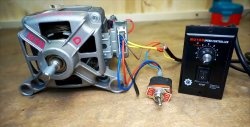
Connecting the washing machine motor, reverse and regulator

How to connect a star-delta motor
Particularly interesting
Comments (17)

